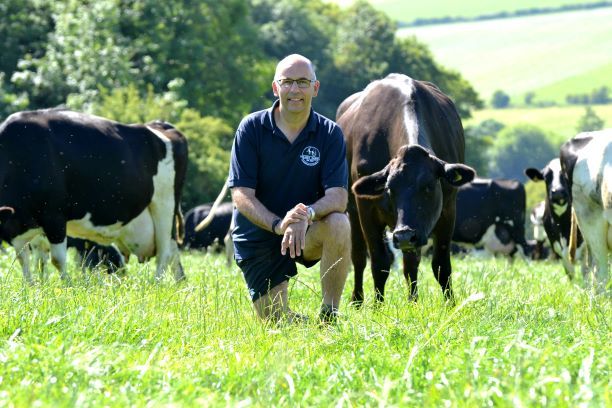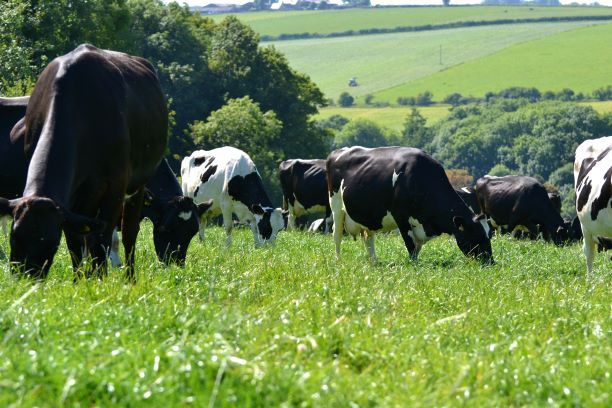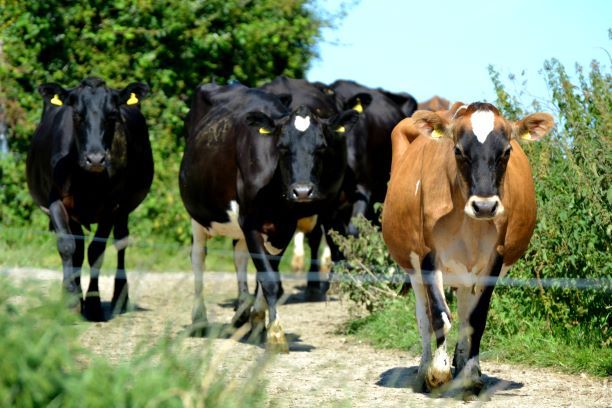SEXED SEMEN FOR BLOCK CALVING HERDS
George Holmes’ decision to use sexed semen on his block calving herds has been driven by a sense of moral duty to avoid sending low value bull calves to slaughter.
He says: “We do not think in the long-term it is acceptable to the consumer. I am not so worried about the value, it is more about the sustainability of the business and the whole dairy industry.”
George has three dairy units near Dorchester, Dorset: a 240-cow, predominantly Friesian autumn block calving herd at Littlewood Farm, Frampton, and a 320-cow spring block calving herd of Kiwi crosses at Longlands Farm, Frampton, which is contract farmed by Jon Hurford.
His son William also manages an autumn block calving herd of 420 cows at Lower Dairy, Poxwell, which he contract farms for Johnnie Russell.
About 12 months ago, George decided to sign up to an Arla and Cogent trial looking at the potential role of Sexed ULTRA 4M semen within a sexed and beef strategy.

CELLS PER STRAW
SexedULTRA 4M uses twice the number of semen cells per straw compared to traditional sexed semen, bringing conception rates in line with those achieved with conventional semen.
George was particularly attracted to using sexed semen in the spring herd, considering Jersey cross Friesian bulls tend to have little value, with bulls typically going to slaughter at two to three weeks old.
Ongoing issues associated with being locked up with TB also added to calf management challenges.
George says: “Historically, we also had a high bull-to-heifer ratio in the spring herd. We would breed 80 replacements and at least 100 or 120 bull calves that would be sent to the abattoir.”
The hope is, by using sexed semen, less dairy bull calves will be produced. George has also taken on extra land and buildings so more dairy cross beef bull calves can be reared on-farm.
He is hopeful he will come to an arrangement with Buitelaar to take beef calves from the autumn herd.
The team had dabbled with sexed semen in the past, however, results proved mixed, with heifers in the autumn herd achieving 33% conception rates and a sample of spring-calving cows hitting 40%.
With conception rates so vital on block calving systems, and the team targeting a six week in-calf rate of 75-80%, George admits to being sceptical.
“It had concerned me. I had quite a lot of doubts,” he says.

DEVELOPMENT
However, with the development of the SexedULTRA 4M technology, he was keen to give it another try.
As a result, this year all heifers from spring and autumn herds were served to Sexed ULTRA 4M as part of a synchronisation programme to front load the calving block.
The autumn herd achieved conception rates of 64% and the springs 52%. These were double the conception rates previously seen using sexed semen.
George says: “From that, I will definitely carry on with SexedULTRA 4M semen as it does not look like I am losing a lot of conception rates on those heifers.”
He also recognises that having a smaller heifer calf from a heifer makes for an easier calving.
When it came to cows, all cows from the spring-calving herd which were in heat in the first 10 days of the serving period were served to SexedULTRA 4M. The rest were AI’d to Aberdeen-Angus, with an Aberdeen-Angus sweeper then used.
In the autumn calving herd, all first-, second- and third-calvers were served to sexed in the first 21 days of service, followed by AI’ing to an Aberdeen-Angus.
Cows had to be 42 days calved, already seen in heat and had no complications at the previous calving to be eligible for sexed semen.
Spring cows achieved conception rates of 52%, which was higher than on traditional sexed semen.
In autumn-calvers, second- and third-calvers achieved conception rates of 54%.
“In the long run, I think it is the only way to maintain a Kiwi cross herd. It is going to be unacceptable for us to be disposing of calves at a few days old.”

BREEDING AIMS
A BALANCE between milk, fertility and longevity are the breeding aims on both spring and autumn block calving herds.
The spring herd is made up of New Zealand Jersey cross New Zealand Friesian - the typical ‘Kiwi cross’.
The autumn herd has traditionally been New Zealand Friesian. However, cows have recently been crossed to Swedish Red, Danish Red, Fleckvieh or Montbeliarde to help drive yields.
This year, both herds have been put to Holstein Friesian bulls with the aim of going to pure black and white on both herds. This will enable genomic selection to be used in future.

BREEDING STATISTICS
Semen type | CR | No | PD+ | Straws per conception |
Littlewood SexedULTRA 4M | 56% | 106 | 59 | 1.95 |
Longlands Sexed ULTRA 4M | 51% | 211 | 107 | 2.00 |
Littlewood Conventional | 54% | 175 | 95 | 2.09 |
FARM FACTS
Longlands Farm – Spring-calvers:
- 320 Kiwi cross cows
- 5,250 litres at 5.06% butterfat and 4.02 protein
- Housed for two weeks at calving
- Grazed for most of the year and out-wintered on deferred grazing and silage bales
Littlewood Farm – Autumn-calvers:
- 240 Friesians
- 6,750 litres at 4.29% butterfat and 3.65% protein
- Calve outside
- Housed day and night from November on self-feed silage and cake through parlour
find out how much you could make...
Please submit your details below and we will get in touch to produce a personalised herd audit on your farm, which will tell you your cost benefit of using this strategy! Please enter your post code into the message field.